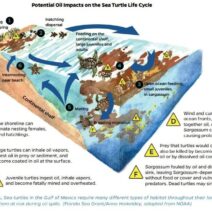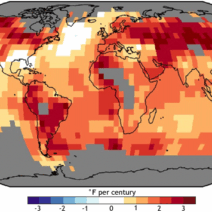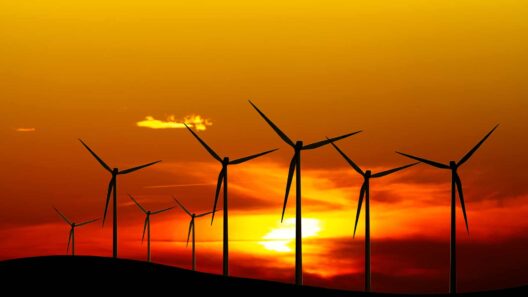Energy conservation is a crucial topic not only within the realms of technology and societal practices but also in the broader context of nature and biology. The interdependence of living organisms and their ecosystems necessitates a comprehensive understanding of how energy flows and is conserved within various biological systems. This treatise explores the multifaceted aspects of energy conservation in nature and biology, including its significance, mechanisms, and implications for biodiversity and climate change.
At the core of energy conservation in nature lies the principle of thermodynamics, specifically the first law, which states that energy cannot be created or destroyed, only transformed. In ecosystems, energy primarily enters through photosynthesis, the process by which green plants, algae, and certain bacteria convert sunlight into chemical energy. This process is vital; without it, the entire food web would collapse. Producers, or autotrophs, harness solar energy and synthesize organic compounds, which are essential not only for their own survival but also for the multitude of organisms that depend on them.
However, energy conservation transcends mere production; it is also about efficiency. An important aspect to consider is the energy transfer inefficiency that occurs at each trophic level. According to ecological efficiency models, approximately 90% of energy is lost in the form of heat at each successive trophic level. This concept emphasizes conservation, as it illustrates the delicate balance that ecosystems maintain; the fewer trophic levels, the more energy available for the organisms at the top. Therefore, understanding these dynamics is critical for sustainable management practices aimed at preserving biodiversity while ensuring resource availability.
Biological mechanisms also play a vital role in energy conservation. Many species have developed adaptations that enhance their energy efficiency. For instance, hibernation in mammals, like bears, is an exemplary evolutionary strategy for conserving energy during periods of scarce food supplies. These animals enter a state of metabolic dormancy, significantly reducing their energy expenditures. Such adaptations allow species to survive adverse environmental conditions while maintaining population stability.
Additionally, strategies such as migration exemplify another evolutionary adaptation aimed at energy conservation. Many bird species undertake extensive migrations to exploit seasonal changes in food availability and climate. By relocating to areas with more abundant resources, these birds not only enhance their survival rates but also optimize their energy use. This phenomenon highlights the interconnectedness of species and their habitats, further emphasizing the importance of energy conservation in ecological dynamics.
In terms of plant biology, energy conservation manifests through various processes such as transpiration and photosynthetic efficiency. The stomatal conductance of plants regulates water loss, thereby enabling them to optimize photosynthesis while conserving water and energy. Some plants, particularly those in arid environments, exhibit specialized adaptations like CAM (Crassulacean Acid Metabolism) photosynthesis, allowing them to conserve water effectively. Such adaptations are crucial in times of climate change, where water scarcity is becoming increasingly prevalent.
The implications of energy conservation extend beyond individual species. Ecosystems themselves are now understood as complex networks of interactions. In these systems, energy conservation is indispensable for maintaining ecological integrity and resilience. Healthy ecosystems provide invaluable services such as carbon sequestration, soil fertility, and water purification, all of which are intrinsically linked to energy conservation. Therefore, conserving energy in biological systems also equates to supporting and preserving these essential ecological services.
Moreover, the conservation of energy in nature aligns closely with human efforts to combat climate change. As anthropogenic activities continue to disrupt natural energy flows through deforestation and fossil fuel consumption, the urgency to innovate sustainable practices becomes paramount. Promoting energy-efficient agricultural practices, such as permaculture and agroforestry, not only conserves energy but also bolsters biodiversity and mitigates adverse climate impacts.
The challenge of climate change necessitates a holistic approach to energy conservation, wherein understanding biological principles informs our actions. For instance, fostering biodiversity through the protection of natural habitats enhances ecosystems’ resilience, enabling them to adapt to climatic variations while continuing to perform vital energy conservation functions. Conservation strategies should incorporate local knowledge and align with natural processes, ensuring a balance between human needs and ecological integrity.
Furthermore, education and advocacy play critical roles in promoting energy conservation in nature. Raising awareness about the intricacies of energy flow and conservation among local communities fosters a sense of responsibility and stewardship for the environment. Conservation programs that engage individuals in restoration projects or sustainable practices can cultivate a profound understanding of energy dynamics, ultimately shaping collective behavior towards a more sustainable future.
In conclusion, energy conservation in nature and biology is a multifaceted issue encompassing ecological principles, evolutionary adaptations, and the interconnectedness of life forms. The conservation of energy within biological systems is not merely a scientific concern but a pressing necessity that underpins global biodiversity and climate stability. The urgent imperative of climate change calls for concerted efforts to understand and implement energy conservation strategies in both natural and anthropogenic contexts. The path forward lies in appreciating the nuanced relationship between energy conservation and ecosystem health, thereby ensuring a sustainable coexistence with the rich tapestry of life on Earth.






